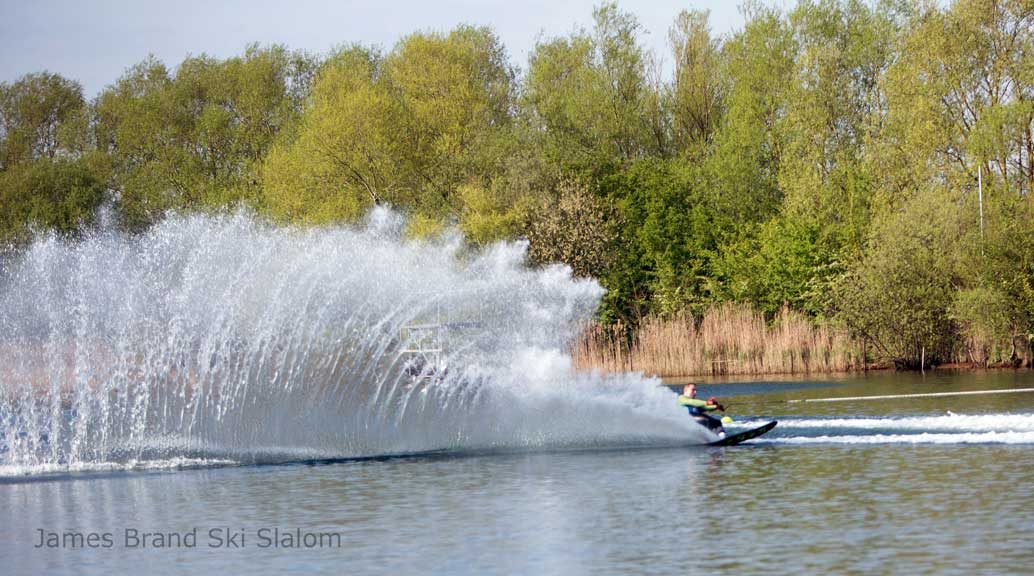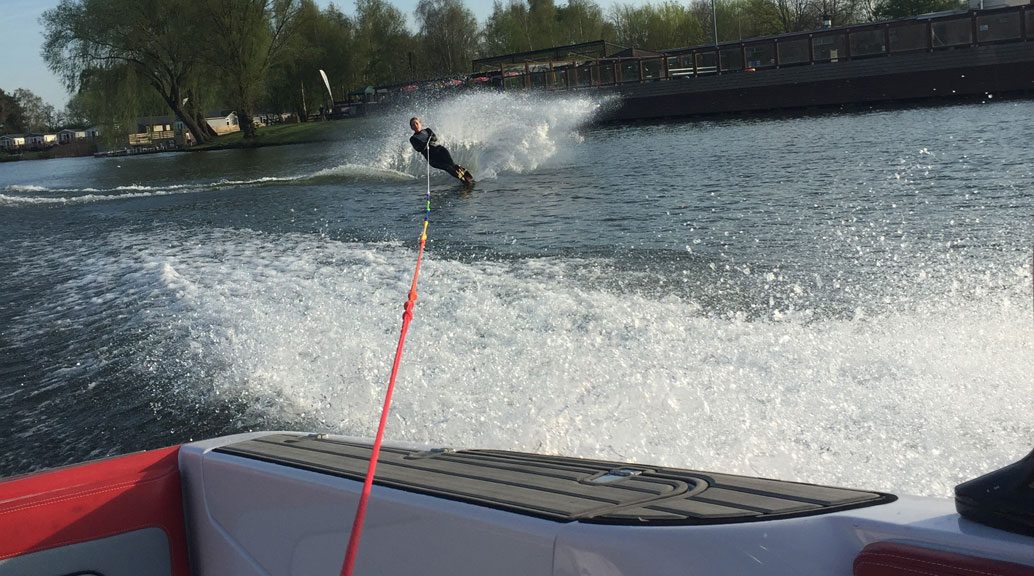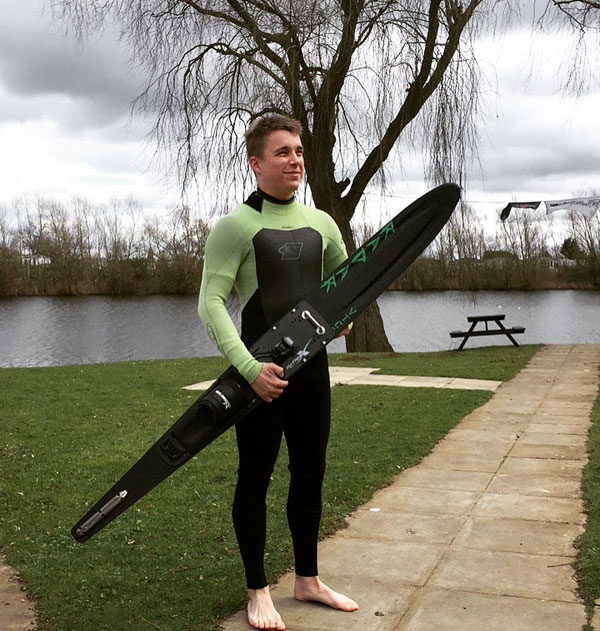The world of slalom water-skiing is a vast one when it comes to choosing the most high performance boots. The most regular question I get asked about bindings is “should I use a hard-shell or a rubber water ski binding?” The answer to this question is that you should use what you feel comfortable with. However determining this is easier said than done!
Rubber Water Ski Boot (Binding)
I started off my water-skiing life with a traditional rubber binding. This binding was perfectly suitable for learning how to perform deep-water starts, crossing the wake from side to side and water skiing comfortably on a slalom ski in a recreational environment, with no buoys to worry about.
When I was introduced to the slalom course, I swapped my traditional rubber binding for a HO Animal Boot (Binding). This boot supported me through learning the course and it was ridiculously comfortable! The binding still continued to support me when I increased the speed at which I was being towed through the course. By the end of last season, when I was still using the HO Animal Boot, it was carrying me through the course at a confident 36mph. The Animal Boot is a very comfortable binding because it’s not overly tight; however despite this the boot still gives excellent support around the ankle and heel of the foot – due to the insole of the boot. Over time the insole of the boot moulds to the contours of your foot, giving you the same feeling through the boot every time. Due to the lacing system on the HO Animal Boot, it is quick and easy to slip on and off which is a great asset, especially if you’re itching to get in or out on the water! Just a simple squirt of some boot slime and you’ll slip straight in there!
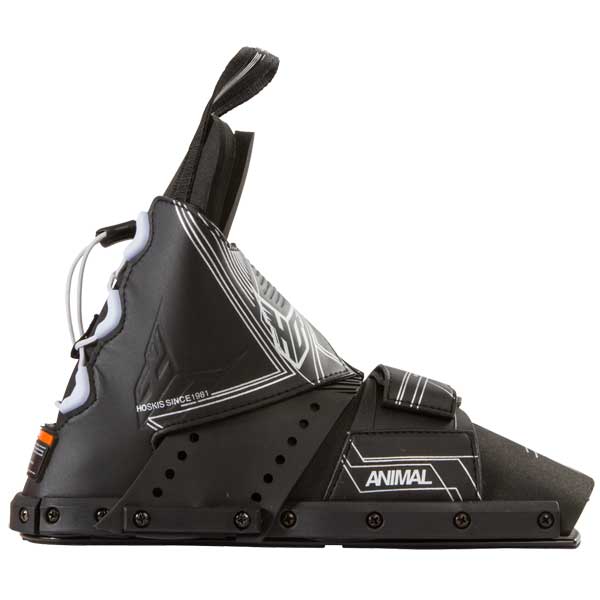
Hard-Shell Water Ski Boot
As much as I loved the HO Animal Boot, I decided to give the hard-shell option a whirl. The whole system was quite complex to set up once the releasing mechanism was bolted onto the ski. However, despite racking my brain for around two hours figuring out how it worked, I finally sorted it and found myself standing on the dock clutching my handle ready to water ski. I won’t go into all the details of that first set with the hard-shell because it would be rather embarrassing; but I will say I spent more time in the water than on top of it!
Despite this I persevered with the hard-shell. It is very different from the Animal, primarily because to hard-shell has a more snug-fit around the foot due to the plastic outer shell. This has often given me an aching sensation in my foot if I have over tightened the binding. However if the hard-shell is correctly tightened , this isn’t such a problem. Personally, I find the hard-shell a confidence-inspiring boot, allowing me to attack the wakes that little bit more.
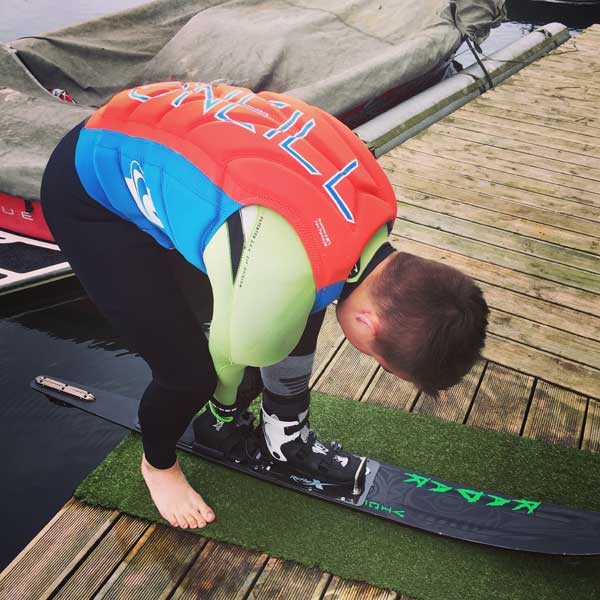
Overall both the HO Animal Boot and the hard-shell are very good bindings. However there is a huge difference in price. Considering the Animal provides me with great performance at those higher speeds and shorter rope lengths, just like the hard-shell, it certainly the cheaper option. This is often found with most rubber water ski boots compared to the hard-shells.
Luckily for you, the Tallington Lakes Pro Shop stock the HO Animal Boot and many other quality boots, so I would certainly consider looking at these to gain a better performance and save those hard earned pennies before you dive into the complex world of a hard-shell! I hope you all have a good, injury free, start to the season!

